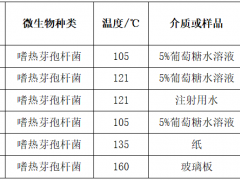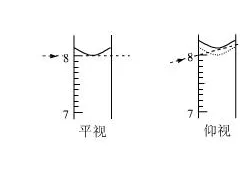John E. Walker – Autobiography
I was born in Halifax , Yorkshire on January 7th, 1941 to Thomas Ernest Walker and Elsie Walker (née Lawton ). My father was a stone mason, and a talented amateur pianist and vocalist. I was brought up with my two younger sisters, Judith and Jennifer, in a rural environment overlooking the Calder valley near Elland, and then in Rastrick. I received an academic education at Rastrick Grammar School , specializing in Physical Sciences and Mathematics in the last three years. I was a keen sportsman, and became school captain in soccer and cricket. In 1960, I went to St. Catherine's College, Oxford , and received the B.A. degree in Chemistry in 1964.
In 1965, I began research on peptide antibiotics with E. P. Abraham in the Sir Willian Dunn School of Pathology, Oxford , and was awarded the D. Phil. degree in 1969. During this period, I became aware of the spectacular developments made in Cambridge in the 1950s and early 1960s in Molecular Biology through a series of programmes on BBC television given by John Kendrew, and published in 1966 under the title "The Thread of Life". These programmes made a lasting impression on me, and made me want to know more about the subject. Two books, "Molecular Biology of the Gene" by J. D. Watson, first published in 1965, and William Hayes' "Bacterial Genetics" helped to assuage my appetite for more information. My knowledge of this new field was extended by a series of exciting lectures for graduate students on protein structure given in 1966 by David Phillips, the new Professor of Molecular Biophysics at Oxford . Another series of lectures given by Henry Harris, the Professor of Pathology and published in book form und
Then followed a period of five years working abroad, from 1969-1971, first at The School of Pharmacy at the University of Wisconsin, and then from 1971-1974 in France, supported by Fellowships from NATO and EMBO, first at the CNRS at Gif-sur-Yvette and then at the Institut Pasteur.
Just before Easter in 1974, I attended a research workshop in Cambridge entitled "Sequence Analysis of Proteins". It was sponsored by EMBO (The European Molecular Biology Organization), and organised by Ieuan Harris from the Medical Research Council's Laboratory of Molecular Biology (LMB) and by Richard Perham from the Cambridge University Department of Biochemistry. At the associated banquet, I found myself sitting next to someone that I had not met previously, who turned out to be Fred Sanger. In the course of our conversation, he asked if I had thought about coming back to work in England . I jumped at the suggestion, and with some trepidation, approached Ieuan Harris about the possibility of my joining his group. After discussions with Fred Sanger, it was agreed that I could come to the Protein and Nucleic Acid Chemistry (PNAC) Division at the LMB for three months from June 1974. More than 23 years later, I am still there.
It goes without saying that this encounter with Fred Sanger and Ieuan Harris transformed my scientific career. In 1974, the LMB was infused throughout its three Divisions with a spirit of enthusiasm and excitement for research in molecular biology led by Max Perutz (the Chairman of the Laboratory), Fred Sanger, Aaron Klug, Francis Crick, Sidney Brenner, Hugh Huxley, John Smith and César Milstein, which was coupled with extraordinary success. For example, along the corridor from my laboratory Fred was inventing his methods for sequencing DNA, immediately across the corridor César Milstein and Georges Köhler were inventing monoclonal antibodies, and elsewhere in the building, Francis Crick and Aaron Klug and their colleagues were revealing the structures of chromatin and transfer RNA. Fred's new DNA sequencing methods were applied first to the related bacteriophages fX174 and G4, and then to DNA from human and bovine mitochondria. I analyzed the sequences of the proteins from G4 and from mitochondria u
In 1978, I decided to apply protein chemical methods to membrane proteins, since this seemed to be both a challenging and important area. Therefore, in search of a suitable topic, I read the literature extensively. The enzymes of oxidative phosphorylation from the inner membranes of mitochondria were known to be large membrane bound multi-subunit complexes, but despite their importance, they had been studied hardly at all from a structural point of view. Therefore, the same year, I began a structural study of the ATP synthase from bovine heart mitochondria and from eubacteria. These studies resulted eventually in a complete sequence analysis of the complex from several species, and in the atomic resolution structure of the F catalytic domain of the enzyme from bovine mitochondria, giving new insights into how ATP is made in the biological world. Michael Runswick has worked closely with me throughout this period, and has made contributions to all aspects of our studies.
In 1959, I received the A. T. Clay Gold Medal. I was awarded the Johnson Foundation Prize by the University of Pennsylvania in 1994, in 1996, the CIBA Medal and Prize of the Biochemical Society, and The Peter Mitchell Medal of the European Bioenergetics Congress, and in 1997 The Gaetano Quagliariello Prize for Research in Mitochondria by the University of Bari, Italy. In 1995, I was elected a Fellow of the Royal Society. In 1997, I was made a Fellow of Sidney Sussex College, Cambridge and became an Honorary Fellow of St. Catherine's College, Oxford .
I married Christina Westcott in 1963. We have two daughters, Esther, aged 21 and Miriam, aged 19. At present, both of them are university students, studying Geography and English, respectively, at Nottingham-Trent and Leeds Universities .
From Les Prix Nobel 1997.
什么是食品安全指标
近日,在与朋友们讨论标明执行推荐性标准的食品抽检不合格的处理时,有人提出应当适用《食品安全法实施条例》第七十四条,……(世界食品网-www.shijieshipin.com)
2023-06-25712
检测报告要求
1信息完整、一致:原始记录要具有原始性、可复现性、追溯性(特别是检测方法、规范),对检测条件有具体要求时应详细记录。有些信……(世界食品网-www.shijieshipin.com)
2023-06-25426
食品中常见的微生物汇总
假单胞菌属:革兰氏阴性、极生鞭毛、可运动、不生芽孢、杆状,新鲜食品中的优势菌,常存在于土壤和水中,广泛分布在食品中。另外……(世界食品网-www.shijieshipin.com)
2023-06-25763

- 什么是湿热灭菌中的D值、Z值、F0值?一文解析
0评论2023-06-25
实验室温湿度要求
在实验室的监控项目中,不同实验室对温湿度都有要求,大部分实验都是在明确的温湿度环境中展开。在医药、生化、仪器校准、……(世界食品网-www.shijieshipin.com)
2023-06-25810
样品管理员需要授权?
样品管理员要不要授权?1正方观点:不需要授权依据CNAS-CL01条款6.2.6 实验室应授权人员从事特定的实验室活动,包括但……(世界食品网-www.shijieshipin.com)
2023-06-25583
高压蒸汽灭菌锅使用标准操作程序
高压灭菌锅在日常使用和维护中有许多地方是需要重视的,这样才能更好的保证人员安全及设备的正常运行,今天小编就为您分享……(世界食品网-www.shijieshipin.com)
2023-06-25394
浅谈关于天平内放置干燥剂的问题
万分之一天平防尘罩里面到底要不要防干燥剂?天平生产厂家都不建议放?因为干燥剂的存在会引起罩内空气对流进而影响称量, 另外干……(世界食品网-www.shijieshipin.com)
2023-06-25387

- 量筒,你用对了吗?
0评论2023-06-25
超净工作台失火对策
1管理要求(1)超净工作台由专人管理,定期清洁过滤网。(2)使用人员应保持超净工作台的整洁卫生。(3)微生物实验与植物……(世界食品网-www.shijieshipin.com)
2023-06-25268